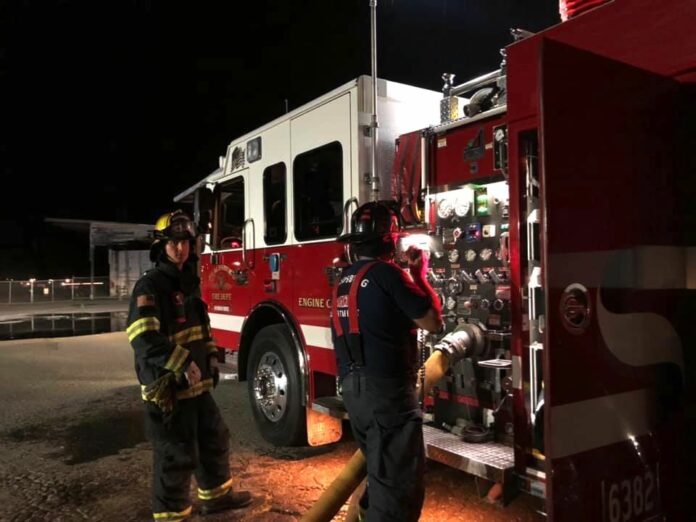As fire season continues the Healdsburg Fire Department is continuing its fire preparation and training for high-risk locations.
With the addition of the Mill District and new structures coming online, Healdsburg Capt. John Sullivan discussed how the department prepares for emergency events and how they assess new buildings that could pose a different risk.
“I know they have been working really closely with Fire Inspector Ruben Mandujano and Fire Marshal Linda Collister on street design and access design, still giving way to the architect where they are going to build something beautiful down there, but we still need to have access to it,” Sullivan said.
Sullivan noted that the developers are also working with Collister to make sure the district has plenty of egress, room for folks to get out of the area during an emergency and room for first responders to come in.
“I am certain that we will be involved in trainings down there whether it is put on by them or just our fire marshal or our fire inspector saying, ‘Hey come on down, this building is about to be finished,’” Sullivan said.
The department most recently did a similar scenario of review and training with the H3 Hotel.
“We all walked that building so we knew if they had a fire on the second floor during construction, then we would have water at those floors if we connected to something on the street,” Sullivan said.
Other high-risk locations that the department inspects and trains at in town include areas with hazardous items such as propane tanks.
“For instance … our fire marshal had us over at Ally 6, a distillery in town, because it is a very specific type of building, it is a very specific hazard. The building type is standard steel construction but what they do there is very specific. If there was a fire happening in that building — alcohol burns clear, so we would need to recognize that very early on,” Sullivan explained.
He said other buildings they would train on are hazard structures such as strip malls.
“We have our strip mall on Vine Street with Safeway so you could have large gatherings of people there or at Big John’s, so we could have events that our outside of a fire and have large quantities of people in a building, so we should know what the outside of the building looks like, as well as the inside and where the main power shut offs are, where the fire panels are, those types of things,” Sullivan said.
He said they consider the same training for hotels in town since they have a high capacity and could have high volumes of people.
“When a new hotel opens up, for instance Hotel Trio was our last one, we went up there and we learned their elevator system, we learned their fire panel system, we went up on the roof and looked at some specific things.”
He said they also ran radio drills on their tac channel since Hotel Trio is a very large structure.
A tac channel is radio to radio and does not repeat.
“So if we talk to our control channel it goes through a repeater, it is a much stronger signal and radio to radio on a tac channel is a much weaker signal so we went and did multiple floor tests and multiple positions of what would be like a battalion position outside of the building to make sure that if we had an issue inside that building we would be able to communicate,” he said.
Preparation and outreach such as vegetation management proved highly useful during the August Fitch Mountain Fire.
“Her efforts (Linda Collister) should be praised. Not necessarily the way that the fire went but the available fuels weren’t there because of the efforts of Linda and our fire chief and chiefs previous, too. It is evidence of two weeks ago that the fire could have gotten a lot bigger but it wasn’t because the grass was cut,” he said.
So what determines a location as a high-risk area?
Sullivan said an area could be determined high risk depending on what is inside a certain building, noting the Alley 6 distillery and high volume buildings like hotels.
“There’s also a number of small businesses in town that would fall under just a hazardous material and that can just be because they have four propane tanks or a forklift, or they have a high pile storage like Aaction Rents — very tall racks, lots of wood and plastics, or if it has propane or chlorine storage,” Sullivan said.
While training and drills on specific buildings don’t happen on a rotating basis, the department does receive a list of inspections every month from Collister, which helps firefighters get to know a building and how they might respond in the event of an emergency.
“We probably pick up more of that specific training while we are doing out inspections,” Sullivan said.
For example last week the department completed its annual inspection of the Boys & Girls Club in town.
In addition to their inspection, which looks at exits, exit signs and fire suppression, inspectors also compile a list of pre-attack plans, which is made available to the engine companies on iPads.
45.9
F
Healdsburg
April 13, 2025








